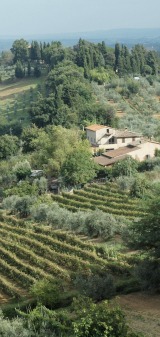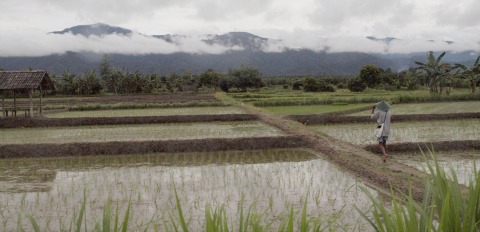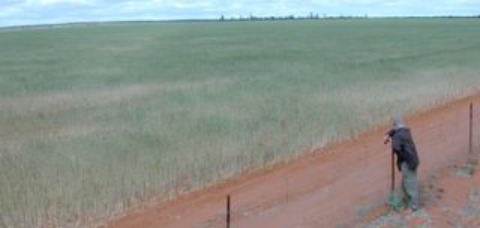Home | About CCW | Contact Us | Climate change Meaning | Causes | Solutions | Emissions | Carbon trading
Climate change adaptation
Climate change adaptation are the practical things we have to do to minimize the effects of climate change. There are engineering solutions that will reduce flooding, protect against storm surges and provide better heat insulation. And there are financial and social solutions that will help buffer our economic systems.
It is smart too, because we cannot stop climate change even if emission reduction targets are met. There is going to be some overshoot alongside the natural climate drivers that are beyond our control — see causes of global warming for an explanation.
Adaptation will include modifications to how we
- grow food
- use water resources
- plan our towns and cities
- look after our landscapes and
- select our energy sources.
For example, in areas where climate change results in lower rainfall totals or there are fewer but more intense rainfall events, current crop choices may become less efficient. Farmers may need to switch to new varieties, crop types or cultivation methods to maintain yield and consistency of production.
Adaptation will be necessary even if climate change is natural and not caused by human actions.
This is because whilst there may still be doubt over anthropogenic global warming, we know that human land use has reduced the overall resilience of the landscape.
When every inch of the landscape has been modified to channel plant growth into food and fibre for human consumption and use, the options for increasing or sustaining production have already been much reduced.
We cannot escape this increase in demand even if population growth were to slow because there would still be pressure from the need to raise living standards. Like it or not, everyone in the world would like a mobile phone.
So emissions will continue to rise and climate will change making climate change adaptation essential.
Only adaptation is not the solution we are focused on right now.
Currently we want to reduce or avoid greenhouse gas emissions - the engineering approach to try and keep atmospheric CO2 concentrations below 450ppm, our adopted climate change policy.
Read more on the issue of emissions growth at our sister blog, alloporus | ideas for healthy thinking.
Try to fix it
'Fix it if it is broken' has been our standard response since Victorian times.
It was back than that we began to believe that we had the ability to control the world around us. Our industry was invincible and we could engineer solutions to any problem, however large.
With climate change, once we realized it was greenhouse gases that caused anthropogenic climate change , we readily adopted emission reductions as the solution.
It was logical at the time because emission reduction required engineering. New energy sources, alternative fuels, green power are just the start of the options.
Even a brief analysis of emission reduction targets tells us that engineering is not enough, nor is it fast enough.
For example, Australia will need to find 170 million tCO2e if it is to meet the governments original emissions target of 5% below 2000 levels.
We will need energy efficiency and alternative fuels to reduce emissions from fossil fuels.
We will need biosequestration to capture carbon from the atmosphere through, for example, soil, tillage and pasture management.
We will also need to avoid deforestation because cutting down trees and clearing vegetation has contributed a third of the greenhouse gases released by human activity.
But if this is all we do, will it be enough?
We probably should have plan B. It makes sense to be ready for the situation where emission reduction and biosequestration is not enough and we get some climate change anyway.
Climate change adaptation is the collective term for activities that we must do to minimize the effects of climate change.
Among politicians and civil servants there is talk of adaptation but, so far, little action. This may be because we are not sure what adaptation means or what it is we are adapting to.
Do we need to adapt to:
- 2 degrees of warming
- 50cm rise in sea level
- warmer summers
- drier winters
- more intense storms
...all of the above or something else?
The problem is that climate change effects are many.
Some of these effects we can avoid (build on higher ground), some we can prepare to minimize their effects (put up shade cloth) and others we just cannot avoid and so must change our land management activities (wheat production must move to a new district).
Climate change adaptation will actually be to changing probabilities.
Adaptation to the chance of more frequent or more intense events that reduce, disrupt or prevent production, impact our economies and affect our social systems.
If the climate models are to be believed, events that currently are extreme will become more of the norm. What used to be a big, unusual flood will be average size and regular.
The same applies to the components of climate: temperature, evapo-transpiration, rainfall and runoff and the implications of lack and excess.
The challenge is that change to chance is hard to predict. Anyone who works the land will tell you that no two years are the same. There is no average year, only averages.
What does this mean for adaptation?
Land management has to prepare for and cope with greater variation around the norm as well as to extremes.
Climate change adaptation is actually about risk.
Agriculture has always been risky because the rain must fall when the crop is growing, the nutrients must be available for seed production, and the water to fill out the fruit. And there mustn't be a frost or a locust outbreak or a visit from flying foxes to the orchard.
Risk management options are
- wear it
- insure against it
- mitigate for the effects
And it is the mix of these three options that will define what adaptation will be in the face of climate change.
We need to be thinking about and implementing ways to mitigate today.
climate change wisdom › warming › climate change adaptation
Recent Articles
-
Reducing emissions while looking for solutions...
Nov 01, 15 04:46 PM
I've seen a lot of post's online for ideas on reducing emissions. The one suggestion I have not seen, is the most obvious. There should be a government -
Climate change evidence
Mar 24, 15 06:22 AM
Real climate change evidence has to demonstrate a change in climate. An extra sunny day or a severe storm or a flood is not enough. -
The climate change effect
Feb 19, 15 03:08 AM
What will be the climate change effect? There isn't one, there are many. Perhaps too many for us to understand.






New! Comments
Have your say about what you just read! Leave me a comment in the box below.